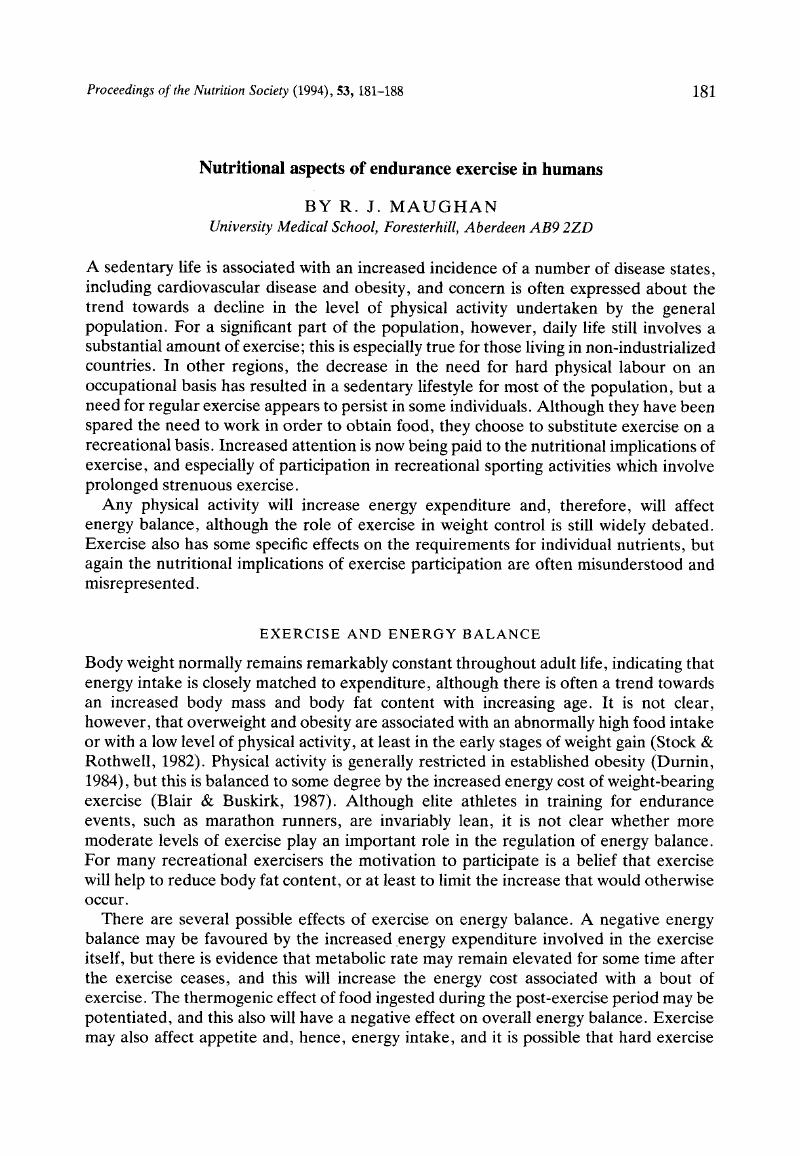Article contents
Nutritional aspects of endurance exercise in humans
Published online by Cambridge University Press: 28 February 2007
Abstract

- Type
- Symposium on ‘Nutrition and activity’
- Information
- Copyright
- Copyright © The Nutrition Society 1994
References
- 6
- Cited by




